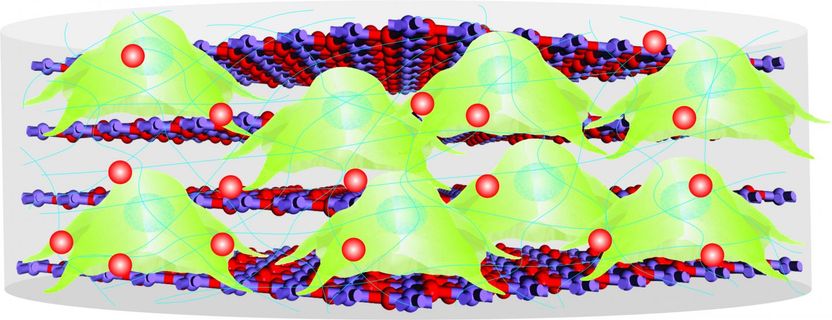Advancing stem cell therapy with biodegradable scaffold
New technology is aimed at central nervous system diseases and injuries
Advertisement
Rutgers scientists have created a tiny, biodegradable scaffold to transplant stem cells and deliver drugs, which may help treat Alzheimer's and Parkinson's diseases, aging brain degeneration, spinal cord injuries and traumatic brain injuries.

A biodegradable inorganic nano-scaffold, consisting of stem cells, proteins and drugs, for advanced stem cell therapy and drug delivery.
KiBum Lee, Letao Yang and Sy-Tsong Dean Chueng
Stem cell transplantation, which shows promise as a treatment for central nervous system diseases, has been hampered by low cell survival rates, incomplete differentiation of cells and limited growth of neural connections.
So, Rutgers scientists designed bio-scaffolds that mimic natural tissue and got good results in test tubes and mice, according to a study. These nano-size scaffolds hold promise for advanced stem cell transplantation and neural tissue engineering. Stem cell therapy leads to stem cells becoming neurons and can restore neural circuits.
"It's been a major challenge to develop a reliable therapeutic method for treating central nervous system diseases and injuries," said study senior author KiBum Lee, a professor in the Department of Chemistry and Chemical Biology at Rutgers University-New Brunswick. "Our enhanced stem cell transplantation approach is an innovative potential solution."
The researchers, in cooperation with neuroscientists and clinicians, plan to test the nano-scaffolds in larger animals and eventually move to clinical trials for treating spinal cord injury. The scaffold-based technology also shows promise for regenerative medicine.






















































